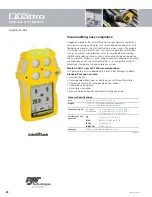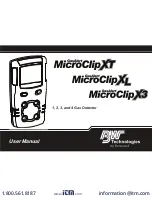
•
Make a home escape plan. Draw a map of your home showing all doors and
windows. Discuss the plan with everyone in your home.
•
Know at least two ways out of every room, if possible. Make sure all doors and
windows leading outside open easily.
•
Have an outside meeting place (like a tree, light pole or mailbox) a safe distance
from the home where everyone should meet.
•
Practice your home fire drill at night and during the day with everyone in your
home, twice a year.
•
Practice using different ways out.
•
Teach children how to escape on their own in case you can’t help them.
•
Close doors behind you as you leave.
IF THE ALARM SOUNDS
•
If the smoke alarm sounds, get out and stay out. Never go back inside for
people or pets.
•
If you have to escape through smoke, get low and go under the smoke to your
way out.
•
Call the fire department from outside your home. FOR MORE SAFETY
INFORMATION SEE THE WEBSITE: www.nfpa.org/education.
12.
CARBON MONOXIDE GAS AND ITS DETECTION
CAUTION:
This carbon monoxide detector is designed for indoor use only. Do not
expose to rain or moisture. Do not knock or drop the detector. Do not open or
tamper with the detector as this could cause malfunction. The detector will not
protect against the risk of carbon monoxide poisoning if not properly installed.
CAUTION:
This device will only indicate the presence of carbon monoxide gas at
the sensor. Carbon monoxide gas may be present in other areas. This carbon
monoxide alarming device is designed to detect carbon monoxide gas from ANY
source of combustion. It is NOT designed to detect smoke, fire or other gases unless
the product has been investigated and determined to comply with applicable
requirements.
This device should not be installed as a substitute for proper installation, use, and
maintenance of fuel burning appliances, including appropriate ventilation and
exhaust systems. Carbon monoxide gas is a highly poisonous gas which is released
when fuels are burned. It is invisible, has no smell and is therefore impossible to
detect with the human senses. Under normal conditions in a room where fuel
burning appliances are well maintained and correctly ventilated, the amount of
carbon monoxide released into the room by appliances should not be dangerous.
Conditions that can result in transient CO situations:
1.
Excessive spillage or reverse venting of fuel-burning appliances caused by
•
outdoor ambient conditions, such as wind direction and/or velocity, including
high gusts of wind, and insufficient draft in the vent pipes,
•
negative pressure differential resulting from the use of exhaust fans,
•
simultaneous operation of several fuel-burning appliances competing for
limited internal air,
•
loose vent pipe connections from fuel-fired appliances,
•
obstructions, or unconventional vent pipe designs that can amplify the above
situations,
•
poorly designed or maintained chimneys and/or vents,
2.
Extended operation of unvented fuel-burning devices (range, oven, fireplace,
etc.),
3.
Temperature inversions that can trap exhaust gases near the ground,
4.
Car idling in an open or closed attached garage, or near a home.
The following symptoms are related to CARBON MONOXIDE POISONING and are to
be discussed with All members of the household:
1.
Mild Exposure:
Slight headache, nausea, vomiting, fatigue (often described as
"Flulike" symptoms).
2.
Medium Exposure:
Severe throbbing headache, drowsiness, confusion, fast
heart rate.
3.
Extreme Exposure:
Unconsciousness, convulsions, cardiorespiratory failure,
death.
4.
Many cases of reported CARBON MONOXIDE POISONING indicate that while
victims are aware they are not well, they become so disoriented they are unable
to save themselves by either exiting the building or calling for assistance. Young
children and household pets are typically the first affected.
































